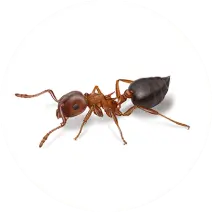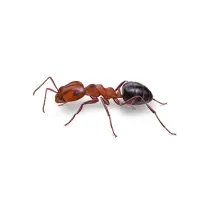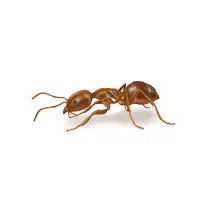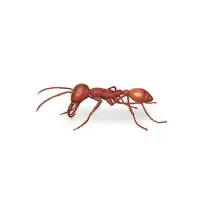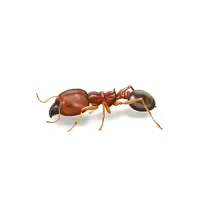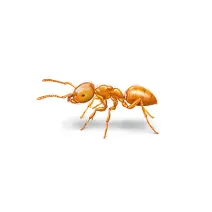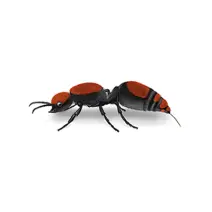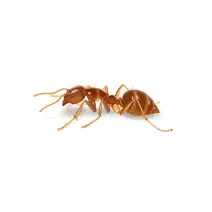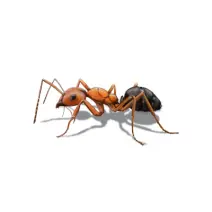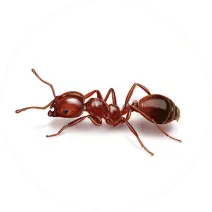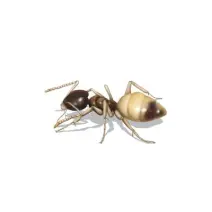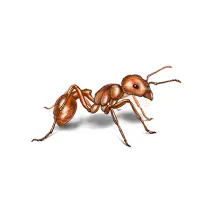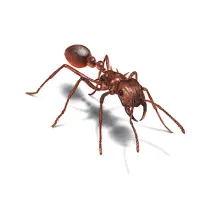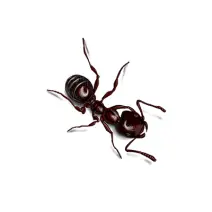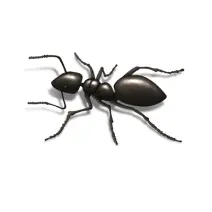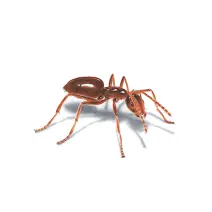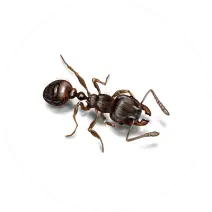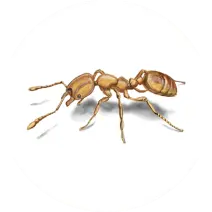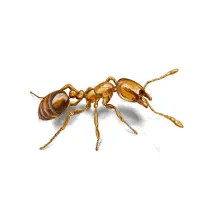Ants Come Out in Spring
Why Do Ants show up in Early Spring?
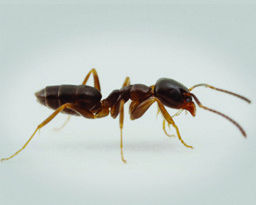
Ants become more active in spring for several reasons:
Temperature and Activity: Ants are ectothermic, meaning their body temperature depends on the external environment. During the winter, cold temperatures cause ants to slow down and become dormant. As spring arrives and temperatures rise, ants become more energetic and active again1.
Food Availability: Spring provides ants with abundant food sources. While they primarily feed on sweet substances like honeysuckle found in nature, if they discover easily accessible sugary food in your home, they’ll march in, take it, and head back outdoors to relish it2.
Shelter and Water: Ants seek shelter from the hot sun and spring rains by entering human homes. Your house, with its warmth at night and readily available food and water resources, becomes an attractive destination for these tiny explorers3.
So, when you see ants scurrying around in spring, it’s because they’re on a mission to thrive and expand their colonies!
Identifying Ant Infestations
Identifying an ant infestation involves recognizing specific signs.
Here’s what to look for:
Visible Ants: If you spot live ants crawling around your home, it’s a clear indication of an ant problem12. They are often found in kitchens or areas where food is prepared.
Ant Trails: Ants leave behind pheromone trails as they move. These trails appear as lines of ants marching in a straight path, leading to and from food sources13.
Ant Nests: Ant nests can resemble small piles of soil or dirt. Some ant species prefer nesting in walls or other quiet, dark places, making them harder to spot1.
Dirt Piles: Small piles of dirt around nest sites are indicative of an ant infestation1.
Discarded Wings: If you find discarded wings around windows and doors, it could be a sign of ants swarming and establishing new colonies3.
Unusual Sounds: Ants may invade walls and voids in your home. Carpenter ants, in particular, can be noisy when excavating4.
Musty Odor: Certain ant species, like odorous or citronella ants, emit a distinct musty scent4.
Remember, early detection allows for prompt action to control the infestation. If you suspect an ant problem, consider seeking professional pest control assistance. 🐜🔍
.
Look Out for These Signs of Damage
Don't Let Carpenter Ants Destroy Your Home: Look Out for These Signs of Damage
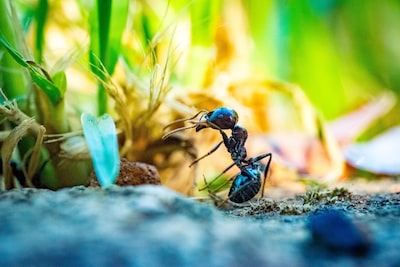
Carpenter ants, those persistent insects, can become a homeowner’s worst nightmare. Their destructive habits have the potential to wreak havoc and cause extensive harm to your beloved home’s very structure, leaving it vulnerable and weakened. As a vigilant homeowner, it is crucial to become familiar with the unmistakable signs that point to the presence of carpenter ant damage. By actively recognizing and promptly addressing these signs, you stand a better chance of mitigating the disastrous consequences of these relentless pests. Therefore, in this informative blog post, our objective is to provide you with a comprehensive understanding of the various indicators of carpenter ant damage, along with valuable insights and practical advice on how to both prevent such infestations and effectively manage them should they occur.
.
Signs of Carpenter Ant Damage
Visible Wood Shavings
- One of the most obvious signs of carpenter ant damage is the presence of wood shavings or sawdust near wooden structures in your home.
- These shavings are a result of the ants excavating galleries and tunnels in the wood.
Hollow-Sounding Wood
- If you tap on a wooden structure and it sounds hollow, it could be a sign of carpenter ant damage.
- The ants hollow out the wood as they create their nests, leaving behind weakened and compromised structures.
Frass
- Carpenter ants produce a substance called frass, which is a mixture of wood particles and ant waste.
- If you notice small piles of frass near wooden structures, it could indicate a carpenter ant infestation.
Prevention and Treatment
Remove Moisture Sources
- Carpenter ants are attracted to moisture, so it’s important to eliminate any water sources in and around your home.
- Fix leaky pipes, repair damaged gutters, and ensure proper drainage to prevent moisture buildup.
Seal Entry Points
- Inspect your home for any cracks or gaps that could serve as entry points for carpenter ants.
- Seal these openings with caulk or another appropriate sealant to prevent ants from entering your home.
Trim Trees and Shrubs
- Carpenter ants often nest in trees and shrubs before making their way into your home.
- Regularly trim branches and shrubs that are in close proximity to your house to reduce the risk of infestation.
Conclusion
By being aware of the signs of carpenter ant damage and taking preventative measures, you can protect your home from these destructive pests. If you suspect a carpenter ant infestation, it’s important to contact a professional pest control company to assess the situation and provide appropriate treatment. Don’t let carpenter ants destroy your home – stay vigilant and take action to keep them at bay.
Contact Us Today For Carpenter Ants
What is an Ant Colony?
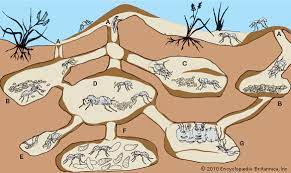
Unraveling the Mysteries of Ant Colonies: More Than Just a Picnic Nuisance
Ants, those tiny six-legged creatures we often spot marching in neat lines at picnics, are more than just pesky intruders seeking a snack. They’re the architects of a fascinating social phenomenon known as ant colonies. These bustling communities are like mini-cities hidden beneath our feet, where teamwork, organization, and specialization take center stage. So, let’s grab our magnifying glasses and delve into the secret world of ant colonies.
The Buzz About Ant Colonies
Imagine if your entire life revolved around a single mission: ensuring the survival and prosperity of your community. This is the driving force behind ant colonies. These miniature societies are home to thousands or even millions of ants that work together in a synchronized symphony of cooperation.
Social Hierarchy at Its Finest
Every ant colony operates like a well-oiled machine, and each member has a specific role. You’ve got your worker ants, who scurry around tirelessly foraging for food, building nests, and taking care of the queen’s offspring. Soldiers stand guard, protecting the colony from potential threats. And let’s not forget the royal family—queens and kings—who are responsible for reproduction and the continuation of the colony’s legacy.
The Queen’s Royal Saga
Speaking of queens, their story is nothing short of fascinating. Once a potential queen ant hatches, she embarks on a daring journey to establish her own colony. After a nuptial flight with male ants, she sheds her wings and begins her life’s work: laying eggs. Some queens can lay thousands of eggs a day, ensuring the colony’s population grows and thrives.
Nifty Nesting
Now, let’s talk real estate. Ants are the ultimate architects, crafting intricate nests out of soil, twigs, leaves, or even your kitchen crumbs. These nests provide a safe haven for the colony, offering protection from predators and the elements. Some species build mounds, while others create underground labyrinths. Regardless of the style, these nests are the heart of the ant community.
Supercolonies: The Urban Legends of the Ant World
Ever heard of ant supercolonies? These are like ant metropolises on steroids, stretching across vast areas and encompassing multiple nests. The Argentine ant, for example, has given rise to massive supercolonies spanning entire neighborhoods. These sprawling networks challenge our notions of individual colonies and demonstrate the true power of cooperation on a grand scale.
Conclusion
So, the next time you spot ants on a mission near your picnic blanket, remember that they’re not just on a food quest. They’re part of a remarkable social structure that showcases the beauty of teamwork, division of labor, and survival strategies honed over millions of years. Ant colonies are a testament to the wonders of the natural world, reminding us that even in the tiniest creatures, incredible stories unfold beneath our feet.
Deadly Ants In The United States
Asian Needle Ant: A Growing Threat to Biodiversity and Human Health
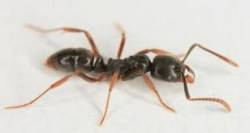
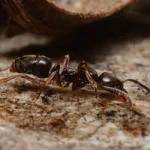
The Asian needle ant is a type of ant that comes from Asia, but has also been found in some parts of the United States. It is an invasive species that can harm the environment and people. It likes to live in dark and damp places, like under rocks or logs. It has a sting that can cause pain and allergic reactions in some people.
If you see these ants in your home or yard, you should try to get rid of them by using baits or pesticides, or by calling a professional pest control service. Here are some sources where you can learn more about the Asian needle ant:
– [Asian Needle Ant | NC State Extension](https://entomology.ces.ncsu.edu/asian-needle-ant/)
– [Brachyponera chinensis – Wikipedia](https://en.wikipedia.org/wiki/Brachyponera_chinensis)
– [Asian Needle Ant | An Invasive Stinging Ant – US Forest Service](https://www.srs.fs.usda.gov/pubs/su/su_srs143.pdf)
Got Ants? Contact us today!
Best way to Kill Carpenter Ants
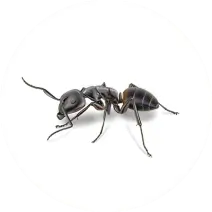
Carpenter ants are a common pest in many households. They are called carpenter ants because they build their nests in wood. They do not eat the wood, but rather excavate it to create their nests
Continue readingHow to Tell the Ants Apart?
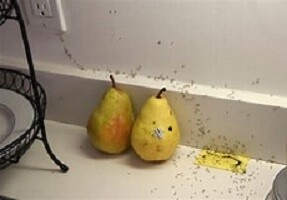
How To Tell Ants Apart from each other
There are many different species of ants, each with its own unique characteristics. Here are some of the most common ant species and some ways to tell them apart from each other:
- Carpenter Ants (Camponotus spp.):
- Characteristics: Larger ants with a single node between their thorax and abdomen. They are usually black or dark brown and can range in size.
- Habit: They nest in wood and can cause structural damage to buildings.
- Identification: The single node and relatively large size distinguish them from other ant species.
- Odorous House Ants (Tapinoma sessile):
- Characteristics: Small ants with a dark brown to black color. They emit a strong, rotten coconut-like odor when crushed.
- Habit: Often found indoors, especially in kitchens and bathrooms.
- Identification: The distinctive odor they emit when crushed is a key identifying feature.
- Pavement Ants (Tetramorium caespitum):
- Characteristics: Small to medium-sized ants with varying colors from light brown to black. They have parallel lines on their head and thorax.
- Habit: Nest in cracks in pavement and soil, but can also invade buildings.
- Identification: The parallel lines on their head and thorax are a good identifying feature.
- Pharaoh Ants (Monomorium pharaonis):
- Characteristics: Tiny ants with a light yellow to reddish-brown color. They have a distinctive “clubbed” or bent antenna.
- Habit: Common indoor pests, often found in warm, humid areas.
- Identification: The bent antenna and small size are distinguishing features.
- Fire Ants (Solenopsis spp.):
- Characteristics: Vary in size, with red or reddish-brown coloration. They can deliver painful stings that result in a burning sensation.
- Habit: Build large mound nests in soil.
- Identification: Their reddish coloration and painful sting are key identifiers.
- Argentine Ants (Linepithema humile):
- Characteristics: Small to medium-sized ants, usually light to dark brown in color.
- Habit: Often form supercolonies, and are common in urban areas.
- Identification: Their tendency to form extensive trails and large supercolonies distinguishes them from other species.
- Black Garden Ants (Lasius niger):
- Characteristics: Small to medium-sized ants, usually black in color.
- Habit: Build nests in soil and are often found in gardens or near buildings.
- Identification: Their small size and black coloration are distinctive features.
- Velvet Ants (Mutillidae family):
- Note: These are actually not true ants but rather wingless wasps. They are included here due to their common association with ants, often called “cow killer ants.”
- Characteristics: Females are wingless and covered in dense, brightly colored hair.
- Habit: Parasitize the nests of other ground-nesting insects.
- Identification: Their robust, hairy appearance and wingless nature set them apart.
Remember that ant species can vary in appearance depending on factors such as location and caste (workers, queens, etc.). To accurately identify ant species, it’s best to consult a field guide or seek help from a local entomologist or pest control professional.
Contact Us Today
Effective Ant Prevention Tips

 Effective Ant Prevention Strategies For Kansas City Property Owner
Effective Ant Prevention Strategies For Kansas City Property Owner
Related Article: How to Get Rid of Ants
A large number of different species of ants are present in Kansas City. March through October is when the ant activity occurs the most. however, they are extremely opportunistic and can relocate indoors to remain all through the year. Ants are social pest, while they form colonies that could be consists of thousands.
Common Types Present In This Region
The Odorous house ant are among the most very likely to travel inside your home. They are small with black shiny appearance, and they’ll emit an unpleasant smell when smashed. Pavement ants are known for creating dirt mounds in walkways while having a dark brown or black appearance. Pavement ants are loaded with a stinger but are a small risk to humans.
Reddish brown color are fire ants and among the list of more hostile varieties. They are going to deliver an unpleasant sting to humans that can create adverse reactions among those with allergies. Carpenter ants are a species recognized for infiltrating water-damaged wooden structures and producing property damage because they burrow through them.
Best Practices For Preventing Ants
- Limit food sources: Promptly clean spills and keep floors and counters free of crumbs. Don’t leave out dirty dishes overnight. Make certain that trash cans have lids that seal completely.
- Create a barrier between the structure plus the soil: Consider establishing a layer of stone or any other forms of inorganic material that creates separation involving the foundation while the earth to deter and limit insects’ access.
- Fill entry points in exterior walls and also the foundation: Closely survey the outside walls and foundation for just about any cracks or other openings and fill all of them with a durable and water-resistant caulk or sealant.
- Cleaning indoor areas where they truly are found: Once ants have identified a supply of food within a house, they create a trail of pheromones that communicates their find to others. It really is helpful to clean the area using a soap or detergent promptly.
- Clear unnecessary clutter and debris: Properly maintain vegetation by trimming it back away through the property. Remove any piles of leaves, fallen trees, or other debris from the yard, and store firewood well away through the home’s exterior.
Significance Of Talking To A Professional Pest Exterminator
Although ants are familiar creatures that exist in nature, they have been unwelcomed inside properties. After they detect a potential food source, these pests tend to are available in droves; therefore, it is important to take swift action when you notice an issue with ants.
Some home owners underestimate the problem associated with eliminating major infestations of ants.
Lots of people try to use fabled home made remedies or do-it-yourself items that are generally ineffective. These insects often travel deep into a structure to inaccessible locations, making your time and efforts to oust them unsuccessful. It’s always best to promptly seek some help from an authorized local pest elimination professional that may thoroughly inspect the premises and produce a remedy.
Leading Provider Of Pest Control Services In Kansas City
The team of experienced specialists at Truly Green Pest Control has been delivering positive results for property owners in this area for quite some time now. We use the latest treatment plans for eradicating problems related to ants, termites, bed bugs, and a host of other troublesome critters. In modern times, we have been on the list of industry leaders in adopting safe practices for humans and protecting the environment.
We currently offer 24-hour emergency response services for all with significant pest-related concerns. We now have also developed three ongoing pest protection plans that have shown to be very helpful at an excellent value.
Call us today for a complimentary interior and exterior inspection and estimate. Effective Ant Prevention Methods For Kansas City Property Owners
Ants In My Kitchen

Ants In My Kitchen
 This has been a very cold winter here in the midwest. Especially here in Kansas City. You might think during that the cold spell we just had … what could possibly live. Temperatures were below zero for weeks! Well not very much, however, Ants will survive. They burrow down deeper to avoid the hard freeze. After the weather or season changes back to spring, you start seeing mounds of dirt pushed up in your lawn with ants going in and out.
This has been a very cold winter here in the midwest. Especially here in Kansas City. You might think during that the cold spell we just had … what could possibly live. Temperatures were below zero for weeks! Well not very much, however, Ants will survive. They burrow down deeper to avoid the hard freeze. After the weather or season changes back to spring, you start seeing mounds of dirt pushed up in your lawn with ants going in and out.
It wont take long for the ants to pick up were they left off. In your kitchen and around your sink is there favorite places. They remember. A trail of ants scurring across your sink counter into small cracks in your grout or along the floor leading to your patio door.
What Ants Are They?
House ants—Ordorous, Argentine, Pharaoh, and little black ants are normally the ants you on your kitchen counter topes. These ants are so small that it is hard to seal them out. They can enter through cracks in in the windows, under doorways, and up the sides of homes by way of sidings. What ever it takes to reach its food supply… they will find away to enter.
You make a common mistake by spraying the ants. It may kill them, however, you did not kill the colony. Were there was one, you can bet the colony is nearby. After you kill of the ants on your colony, the others will follow the pheromonal trail right back to the same place you killed their scouts. You have to kill the colony which houses the queen ant. Her job is to lay eggs and grow the colony. She survives by sending the worker ants back to your home to bring more food to her kingdom.
Read on to learn how to get rid of kitchen ants permanently.
identify all points of entry
The ants mentioned above are pretty simple ants to track. They tend to trail in a uniform order. The usually are in a line straight to the food source and back to their nest. You will notice the ants can take you to cracks in the kitchen floor or window seals that are broken are cracked. Don’t fix the entry points yet until you read this!
Where is the nest?
Watch the ants closely. Bring the Kid out in you. They will literally carry the crumbs back to their nest. Wait for the ants return to the source with their crumbs, and try to spy where they go after exiting the kitchen. Tracking their movement will sometimes lead you directly to the nest where the rest of the colony lives.
You may notice your nest finding journey will take you outdoors, maybe in the ground or in a tree. The nest is usually a mound of dirt if it is in the ground depending what type of ant you are dealing with.
Once you find the nest outside, destroy it with a pesticide that will destroy the colony (like Harris Home Pest Control—Amazon). You do not want to use repellent sprays as they will send an alarm to the ants and cause them to move in every direction. A non repellent spay would be much better as they will not be warned and detect the spray.
Another way to destroy the ants is a half gallon of hot boiling water. Just pour it over the nest and the nest will collapse, killing the ants in the process. If the ants are in your walls then you may want to use a powder such as Boric Acid or dematiaceous earth ( available on Amazon)
I like boric acid because it is safe around humans compared to other insecticides. All though it is safe, please store it like any other insecticide. Always read the label for proper use and storage.
Related Article: How to Get Rid of Ants
Ants That Bite and Sting
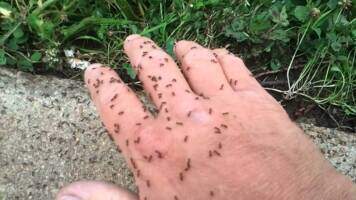
Ant Stings and Bites
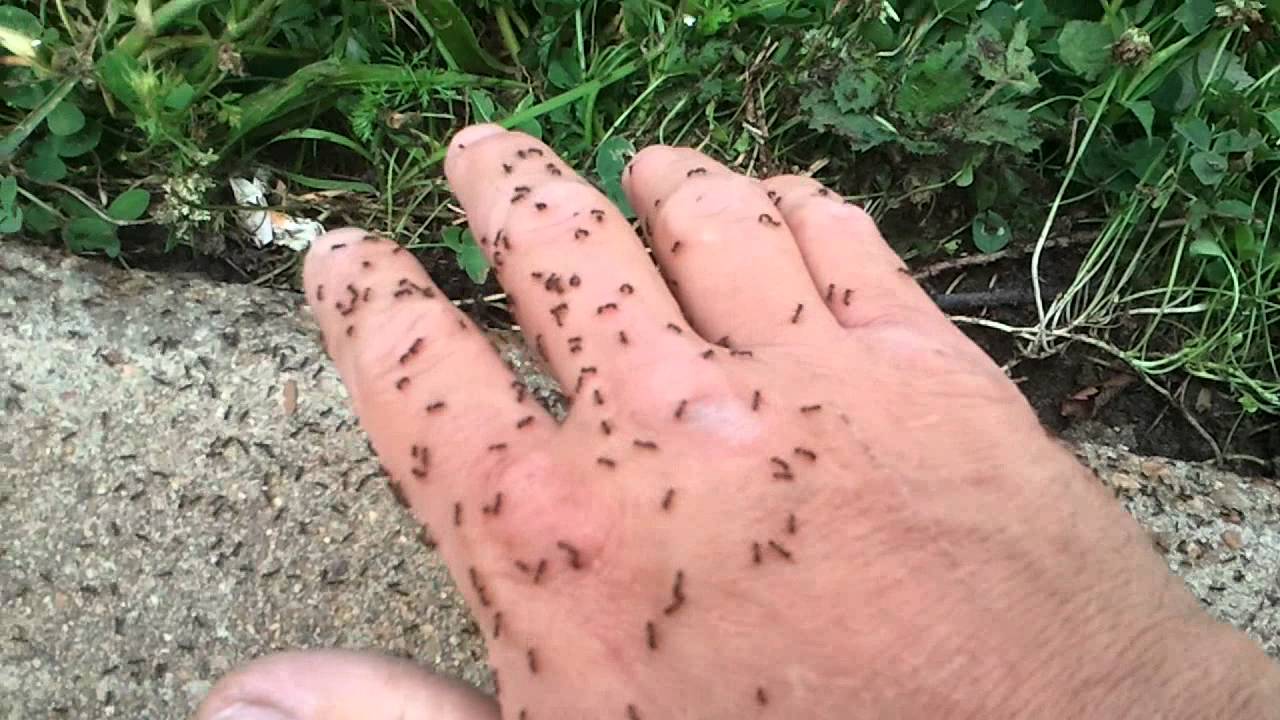 Ant stings with many different types of ants have been known to bite, the main reactions are bought on due to the sting and the ensuing injectant of t the sting. Additionally, harvester ants and fire ants can pose a medical threat because their target is stung multiple times and could cause serious injury to the target or even death.
Ant stings with many different types of ants have been known to bite, the main reactions are bought on due to the sting and the ensuing injectant of t the sting. Additionally, harvester ants and fire ants can pose a medical threat because their target is stung multiple times and could cause serious injury to the target or even death.
Symptoms
What are the symptoms of ant stings? Most of the stings are small and irritating and will go away…much like a shot in the or like at your clinic. It usually subsides in minutes to an hour. Yet some stings will leave a swelling and bruise marks that are reddish in color around where the sting was injected. Depending on if you are allergic to stings or if you are young or older, your body may react differently to the ant venom. At the extreme symptom, anaphylaxis may happen.
Anaphylaxis
An allergen that is introduced into your body by a sting may result in anaphylaxis, a potentially life-threatening reaction. The reaction to the sting may come quickly and pose signs like, wheezing, sneezing, nausea, hives, diarrhea, vomiting, dizziness, anxiety, breathing issues, itching, tightness in the chest, high blood pressure, low blood pressure, fatigue, eye swelling, lip swelling. Seek medical advice immediately without question. This article is not medical advice.
Why do they sting?
Like most insects they will sting for a couple of reasons: They enter protection mode to guard their nest or out trying to incapacitate their prey for consumption, rendering the much larger prey useless against the venom injected. Because your pets are in yards and parks, they are subject to the sting as well. If your pet gets stung you will see notable signs of irritation, like holding one of the paws off the ground are limping in pain as if it stepped on a nail. Still another sign is licking of the paws. When you inspect your pet look for bumps that are hairless, like on the belly or behind the ears.
Related Reads
Common Ants In Kansas City

How To Identify & Control Ants
What do ants look like?
Ants are fascinating creatures that belong to the insect order Hymenoptera and the family Formicidae. With over 12,000 known species, ants are incredibly diverse in appearance, behavior, and habitat. Despite this diversity, they share several common physical characteristics.
Firstly, ants are typically small insects, ranging in size from as tiny as 0.08 inches (2 millimeters) to as large as 2 inches (50 millimeters) in length, depending on the species. Their bodies are divided into three main segments: the head, thorax, and abdomen.
The head of an ant contains several important features. Most notably, ants have a pair of large, segmented antennae that protrude from their heads. These antennae serve as highly sensitive organs, aiding ants in navigation, communication, and detecting food and potential threats. Ants also possess powerful mandibles, or jaws, which vary in shape and size depending on the ant species and its dietary preferences. Some ants have mandibles adapted for biting and cutting, while others have mandibles designed for grasping and carrying objects.
Ants have compound eyes, which are composed of numerous tiny lenses that allow them to detect light, shapes, and movement. While their vision is generally poor compared to humans, ants compensate with their other senses, such as smell and touch.
The thorax of an ant is where the legs and wings are attached. Most ant species have six legs, each equipped with specialized structures for walking, climbing, and grasping. These legs are typically slender and segmented, enabling ants to move efficiently across various terrains. However, some ants have modified legs suited for specific tasks, such as digging tunnels or gripping onto surfaces.
Not all ants have wings, but those that do belong to reproductive castes, such as queens and males. The presence of wings distinguishes these individuals from the non-reproductive worker ants. In winged ants, the thorax may appear enlarged to accommodate flight muscles, especially in the case of males. However, worker ants, which make up the majority of the colony, lack wings and have a more streamlined thorax suited for laborious tasks.
The abdomen of an ant is typically characterized by its flexibility and segmentation. This section of the body houses vital organs such as the digestive system and reproductive organs. In worker ants, the abdomen may appear compact and rounded, while in reproductive individuals like queens, it can be larger and elongated to accommodate developing eggs.
Ants come in a wide array of colors, ranging from shades of black, brown, and red to yellow, green, and even metallic hues. The coloration of an ant species often correlates with its habitat and behavior, providing camouflage or warning signals to potential predators. Some ants exhibit striking patterns or markings on their bodies, which may serve as recognition signals within their colonies or as a deterrent to predators.
In addition to their external appearance, ants also possess unique adaptations that contribute to their remarkable success as a group. For instance, many ant species are equipped with powerful mandibular glands capable of producing and secreting various chemicals, including pheromones. These chemical signals play a crucial role in communication, allowing ants to coordinate activities such as foraging, defense, and reproduction.
Another notable feature of ants is their ability to exhibit polymorphism, meaning they can exist in different physical forms within the same colony. This phenomenon results in the presence of distinct castes, each specialized for specific tasks. For example, within a colony, there may be workers responsible for foraging and caring for the young, soldiers tasked with defending the nest, and reproductive individuals focused on mating and founding new colonies.
Overall, ants display a remarkable diversity of physical traits and adaptations that enable them to thrive in a wide range of environments across the globe. From their segmented bodies and specialized appendages to their intricate communication systems and cooperative behaviors, ants continue to captivate scientists and enthusiasts alike with their fascinating biology and social complexity.
Related Articles: How to Get Rid of Ants
Types of ANTS In Kansas and Missouri
